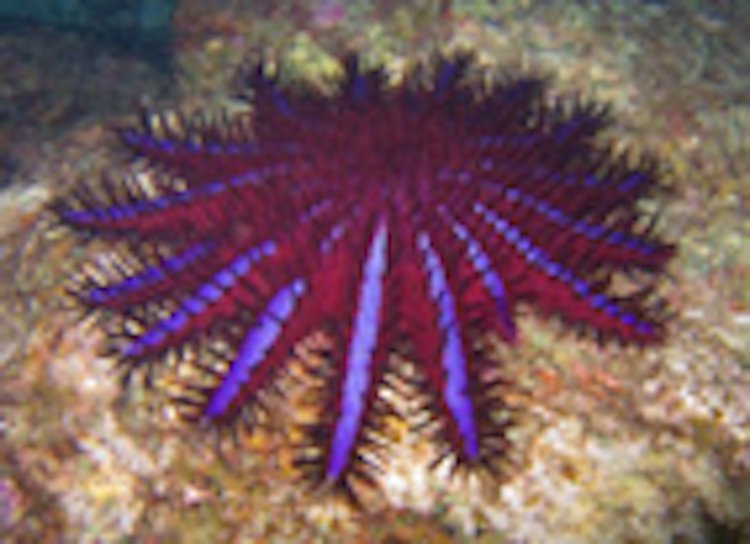The Great Barrier Reef is in the sea in Australia.
It is made of coral.
The coral stretches for 2,000 kilometres.
The coral is made by tiny animals called polyps.
The Barrier Reef is home to many sea creatures.
Part of the Great Barrier Reef seen from the air. ©Getty Images
How big is the Great Barrier Reef?
The Great Barrier Reef is the largest coral reef in the world. It is 2, 000 kilometres long, and is 180 metres high in some places. It can can be seen from outer space, and is considered to be one of the Seven Natural Wonders of the World.
What is the Great Barrier Reef and where is it?
The Great Barrier Reef is not in fact one single reef, but a system of about 3, 000 individual coral reefs and islands stretching from Cape York to Gladstone off the Queensland coast. Coral reefs are also found in other warm Australian waters.
Some coral formations in the Great Barrier Reef ©Getty Images
A coral reef is a living thing
A coral polyp. ©Getty
Like any coral reef, the Great Barrier Reef can be killed because it is made up of living creatures. It has been built over many millions of years by tiny animals called polyps. The Reef is home to a huge variety of fish and other sea creatures. Scientists have recorded more than 1,500 species (kinds) of fish living in the Great Barrier Reef.
Hundreds of sea creatures live in a coral reef. ©Getty
The Barrier Reef is Protected
The Great Barrier Reef was declared a marine park in 1976, and was listed as a World Heritage site in 1981.
Threats to the Great Barrier Reef
Shipping
Ships running aground on the reef or oil spills can destroy large sections of the reef. The quickest way for ships to take Australian coal to China and India is from ports along the Reef.
There is a threat to dredge near the Reef to make the sea deep enough for big ships ©Getty Images
The sea is too shallow there for the big container ships, so there has been a threat of dredging to make the sea deeper for the ships to go in and out of those ports. There is great fear and alarm that the resulting silt could choke corals and sea grasses and kill them.
Tourism and Development
Development, building, and mining are killing the reef. When the sea is polluted by rubbish and soil is washed into it by excavation of and building on the land near the reef, the coral is affected because it can only grow in clear water.
Tourism boat on the Reef ©Getty Images
Tourism means a lot of boating in the Reef, for people to see it and to dive from the boats. Sightseers walking on the reef kills coral.
Crown-of-thorns starfish
The crown-of-thorns starfish eats coral polyps.
A crown of thorns starfish . ©Getty
This starfish has always been part of life in a coral reef, but the balance has been tipped because the main natural predator of the starfish, the triton, is greatly prized by humans for its shell. This has resulted in a drop in triton numbers, an increase in the number of starfish and the destruction of very large areas of coral.
Coral bleaching
When corals are stressed by changes in conditions such as increased water temperature or less sunlight they expel the zooxanthellae algae living in their tissues : this algae converts sunlight into food for the polyps and also gives coral its brilliant colours. Over time this causes coral to turn completely white. Coral bleaching can cause coral to die. There has been extensive coral bleaching on parts of the great Barrier Reef on many occasions: 1998, 2002 and in 2016. Scientists believe the warmer water is a result of climate change.
A clownfish is one of many kinds of fish seen in the Great Barrier Reef. ©Getty
Did you know?
It was explorer Mathew Flinders who surveyed and called it the ‘Extensive Barrier Reef.’
It’s a good idea to find information from more than one source!
Read more about the history of the Great Barrier Reef
https://greatbarrierreef.org/about-the-reef/history-of-the-great-barrier-reef/
Read about some of the creatures that live on the Great Barrier Reef. There are kidcyber pages about some of them - check the Animals index
https://facts.kiddle.co/Great_Barrier_Reef#Ecology
Read about the Great Barrier Reef ecosystem: an area where living things depend on each other for survival
https://greatbarrierreef.com.au/information/great-barrier-reef-food-web/
Read the kidcyber page
How can you help look after the Reef?
https://www.squidsquad.com.au/reef-care.html
Watch a video about animals of the Reef
More geography games on oceans at NeoK12











